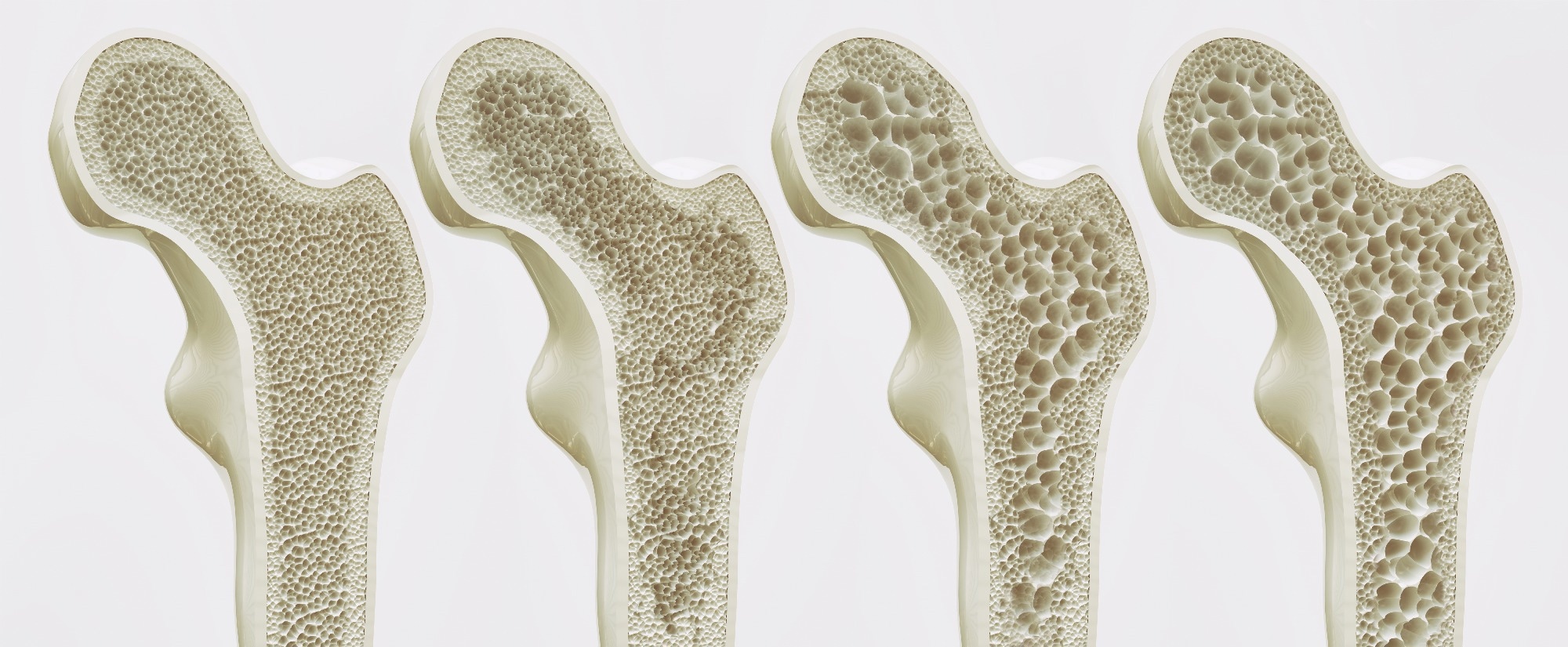A recent review article in Bone Research examines the role of skeletal interoception in bone health and evaluates biomaterials designed to interact with this system to improve bone regeneration. The authors suggest that integrating insights from bioengineering and neuroscience could inform new therapeutic approaches for managing bone-related disorders.

Image Credit: Crevis/Shutterstock.com
Background
Skeletal interoception is an emerging area of study that investigates the communication pathways between the nervous system and bone tissue. These pathways are critical for maintaining physiological and metabolic homeostasis, which underpins bone strength and integrity. The review discusses key factors influencing skeletal interoception, such as neuroregulatory mechanisms and growth factors involved in bone remodeling.
The authors focus on prostaglandin E2 (PGE2), a signaling molecule that mediates the effects of skeletal interoception on bone health. The review also highlights developments in biomaterials engineered to interact with interoceptive pathways, offering potential applications in the treatment of conditions such as osteoporosis and fractures. This work provides a framework for understanding how biomaterials can be designed to enhance bone regeneration.
Studies Highlighted
Various studies have advanced the understanding of skeletal interoception and its implications for bone regeneration. One significant area of focus is the development of biomaterials engineered to support neural guidance and bone repair.
Constructs such as conductive hydrogels and black phosphorus nano-scaffolds have been designed with tailored micro- and nano-topographies to direct neuronal growth and enhance the integration of neural and bone tissues.
Controlled release systems for neuroregulatory factors also play a critical role in facilitating bone regeneration. These systems ensure the sustained and precise delivery of bioactive molecules during key phases of the healing process. The timing and concentration of these factors significantly influence therapeutic outcomes. Biomaterials enriched with magnesium and silicon have demonstrated enhanced regenerative capabilities through well-defined mechanisms.
Another innovative approach involves extracellular vesicles derived from damaged neurons, which show potential as therapeutic agents for mediating communication between neural and skeletal systems. Advanced materials and strategies such as these represent substantial progress in the development of therapies aimed at improving skeletal tissue regeneration.
Results and Discussion
The findings highlight the importance of the three-dimensional architecture of biomaterials in facilitating neural guidance and bone repair. Micro- and nano-topographical features, along with porous structures, provide a supportive environment for neurite extension and neuronal alignment. These structural characteristics are carefully engineered to guide neuronal growth along specific pathways, enhancing the integration of neural and bone tissues.
Controlled release systems play a critical role in delivering neuroregulatory factors with precise spatial and temporal control. These systems ensure the availability of signaling molecules at key stages of the healing process, which is essential for promoting neural development and bone repair. For example, the sustained release of PGE2 has been shown to enhance osteoblast activity, a vital component of bone formation.
The review also discusses advancements in materials incorporating elements such as magnesium and silicon. These components contribute to bone regeneration by promoting osteogenic differentiation and modulating inflammatory responses.
Artificial intelligence (AI) is identified as a promising tool in predictive modeling, particularly for optimizing conditions for bone-neural integration. By analyzing data from in vitro and in vivo studies, AI can streamline the identification of critical factors that influence regeneration, accelerating the development of new biomaterials.
Challenges and limitations in the field are also addressed. Comprehensive research and clinical validation are necessary to ensure the safety and efficacy of these biomaterials. Interdisciplinary collaboration among bioengineers, neuroscientists, and orthopedic specialists is crucial to advancing therapeutic applications of skeletal interoception.
Conclusion
Skeletal interoception is critical in bone health, offering new opportunities for biomaterial-based therapeutic strategies. Further research into its underlying mechanisms and collaborative efforts across disciplines are essential for addressing bone-related conditions.
Advances in this field have the potential to improve regenerative therapies, ultimately benefiting individuals affected by skeletal disorders.
Journal Reference
Bai, L., et al. (2025). Skeletal interoception and prospective application in biomaterials for bone regeneration. Bone Research. DOI: 10.1038/s41413-024-00378-w, https://www.nature.com/articles/s41413-024-00378-w